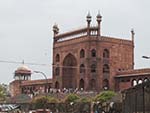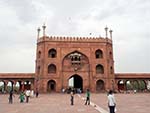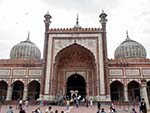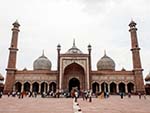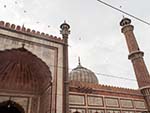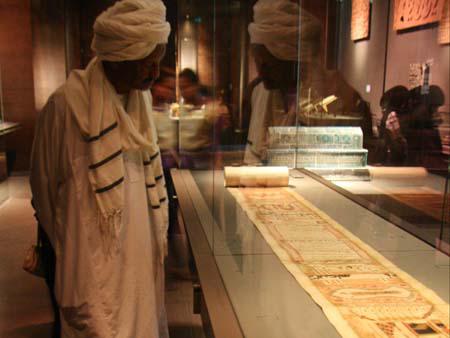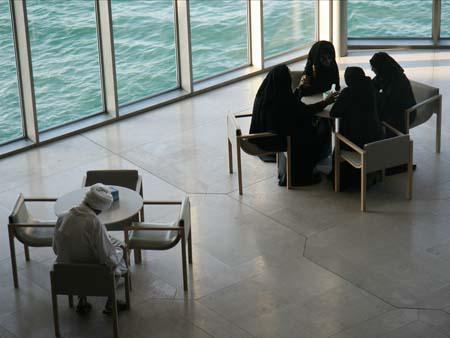It was ironic that the last mosque we would see, would be our most unfortunate encounter, not because of its architecture – the simple red sandstone facade with contrasting white onion-style domes was quite beautiful, but due to the disappointing etiquette in which we were treated.
Having visited a number of mosques throughout our travels in the middle east and more recently the Silk Road, we had learnt a lot about Islam and always ensured we respected and abided by the general rules and etiquette of a mosque when visiting.
It started when we were charged three-hundred rupees to enter the mosque, masked as a camera charge. This was a first as mosques we had visited had never asked for a financial contribution from visitors. They wouldn’t even let us in if we agreed to not take photographs.
After payment, Sonya was forced to wear a chodor (an open cloak), even though she was modestly dressed there, with long sleeved blouse, ankle length skirt and even a scarf to cover her hair. We were confused seeing so many women wearing short sleeved sleeves and uncovered hair when we stepped inside.
Inside wasn’t much better either, with children and women playing with the water of the ablution pond and people using their mobile phones near the qibla.
thydzikgooglemap(http://sonyaandtravis.com/maps/delhi-india-jama-masjid.xml,s)










































































































